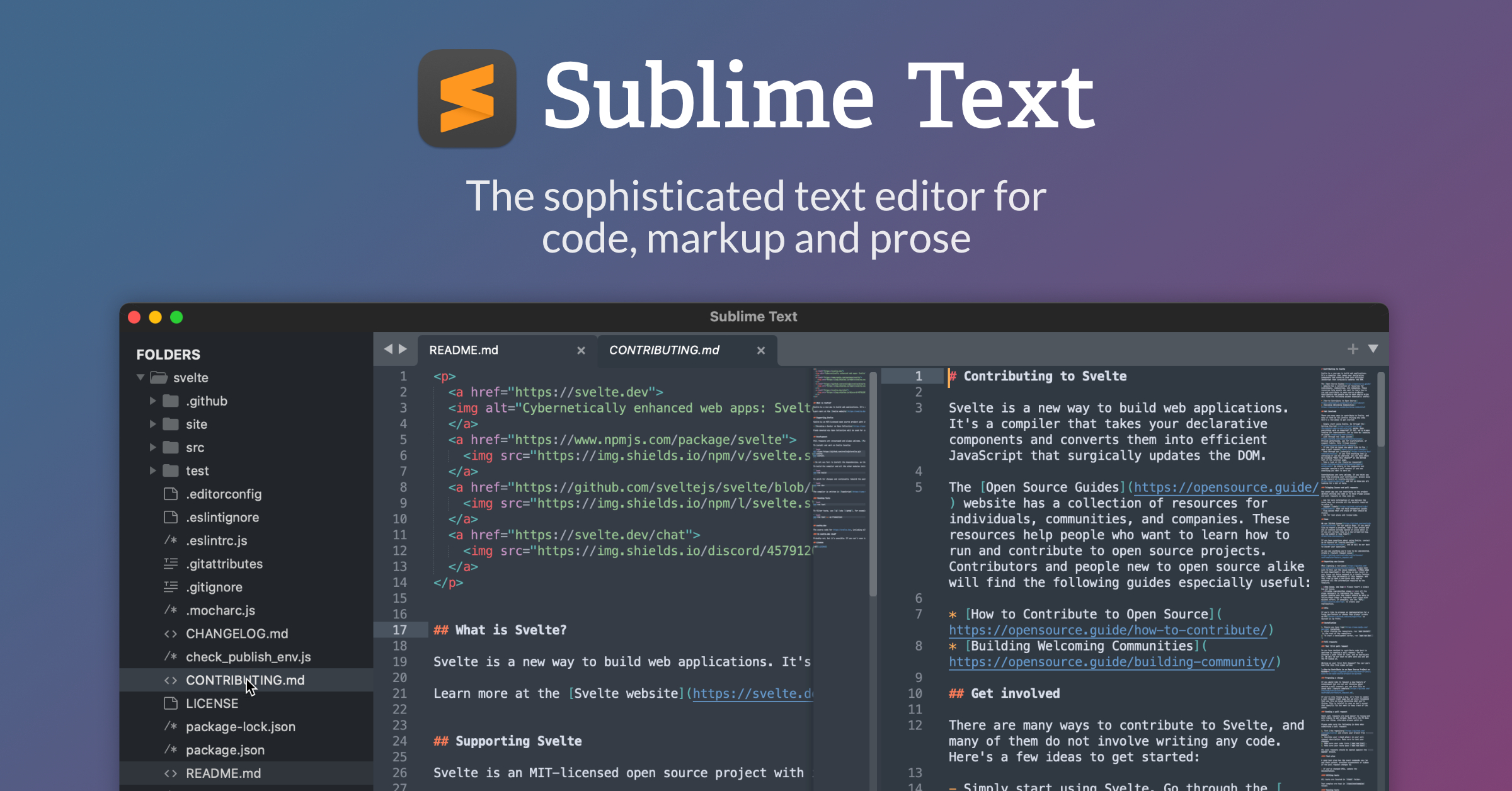
5 Best front end web development tools to consider in 2021

Front end web development tools have come a long way in just a few short years. Thanks to this progress, we can harness the power of highly tested libraries to improve our workflow and benefit from greater possibilities when it comes to responsive design. Not only that, we can build things together thanks to ever-improving version control systems. From browser add-ons and plugins to processors that streamline your code, there have never been more possibilities for creating awesome web applications.
But with the number of web development tools increasing almost daily, finding the best software to get the job done can sometimes feel daunting. To help you out, we’ve created a list of essential tools for frontend development to get you started. If you’re interested in finding out about one in particular, simply select it from the list below.
1. Sublime Text
Let’s start with the basics: a first-rate code editor – one that features a well-designed, super efficient, and ultra-speedy user interface. There are several that do this well, but arguably the best (and most popular) is Sublime Text.

Artfully run by a one-man development team, the secret to Sublime’s success lies in the program’s vast array of keyboard shortcuts – such as the ability to perform simultaneous editing (making the same interactive changes to multiple selected areas) as well as quick navigation to files, symbols, and lines. And when you’re spending 8+ hours with your editor each day, those precious few seconds saved for each process really do add up…
You can start coding with Sublime in this free web development tutorial (no sign-up necessary).
2. Chrome Developer Tools
Wouldn’t it be great if you could edit your HTML and CSS in real-time, or debug your JavaScript, all while viewing a thorough performance analysis of your website?
Google’s built-in Chrome Developer Tools let you do just that. Bundled and available in both Chrome and Safari, they allow developers access into the internals of their web application. On top of this, a palette of network tools can help optimize your loading flows, while a timeline gives you a deeper understanding of what the browser is doing at any given moment.
Google releases an update every six weeks – so check out their website as well as the Google Developers YouTube channel to keep your skills up-to-date.
3. jQuery
JavaScript has long been considered an essential front-end language by developers, although it’s not without its problems: riddled with browser inconsistencies, its somewhat complicated and unapproachable syntax meant that functionality often suffered.
That was until 2006, when jQuery – a fast, small, cross-platform JavaScript library aimed at simplifying the front-end process – appeared on the scene. By abstracting a lot of the functionality usually left for developers to solve on their own, jQuery allowed greater scope for creating animations, adding plug-ins, or even just navigating documents.
And it’s clearly successful – jQuery was by far the most popular JavaScript library in existence in 2015, with installation on 65% of the top 10 million highest-trafficked sites on the Web.
4. GitHub
It’s every developer’s worst nightmare – you’re working on a new project feature and you screw up. Enter version control systems (VCS) – and more specifically, GitHub.
By rolling out your project with the service, you can view any changes you’ve made or even go back to your previous state (making pesky mistakes a thing of the past). The repository hosting service also boasts a rich open-source development community (making collaboration between teams as easy as pie), as well as providing several other components such as bug tracking, feature requests, task management, and wikis for every project.
Many employers will look for finely honed Git skills, so now’s the perfect time to sign up – plus it’s a great way to get involved and learn from the best with a wide array of open-source projects to work on.
5. Twitter Bootstrap
Getting tired of typing in that same styling for a container? How about that button that keeps cropping up? Once you start building front-end applications regularly, you’ll start to notice the same patterns emerging.
UI frameworks are an attempt to solve these problems by abstracting the common elements into reusable modules – meaning developers can scaffold the elements of new applications with speed and ease.
The most widely used of these frameworks is Bootstrap, a comprehensive UI package developed by the team at Twitter. Complete with tools to normalize stylesheets, build modal objects, add JavaScript plugins, and a plethora of other features, Bootstrap can dramatically cut down on the amount of code (and time) needed to build your project.





